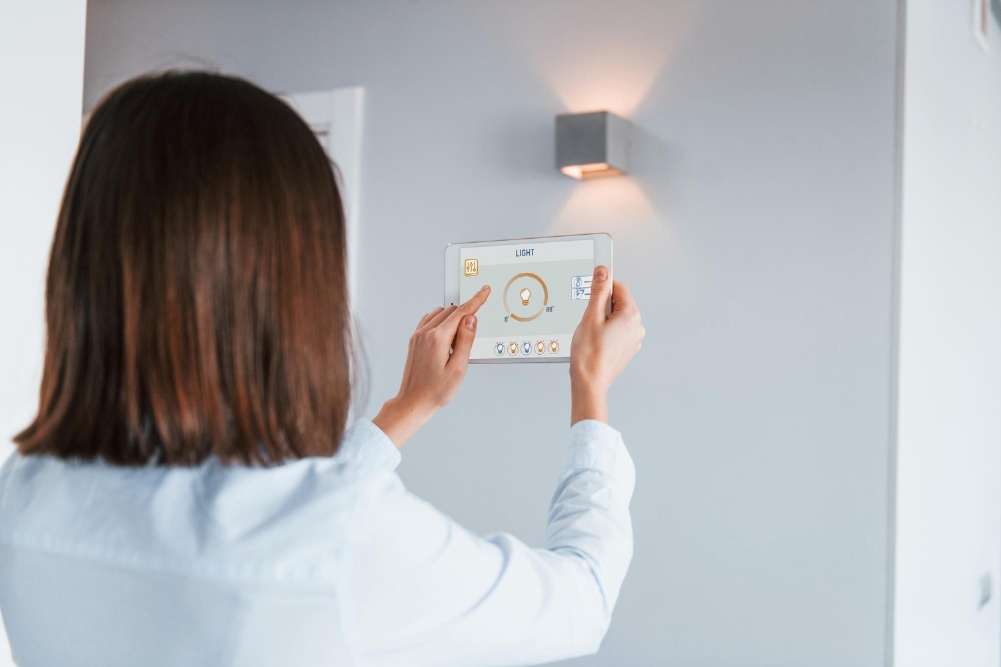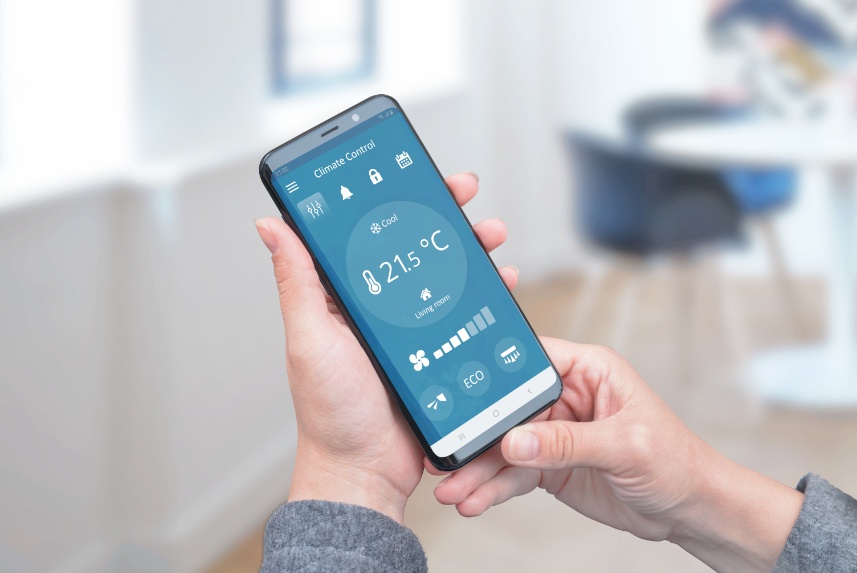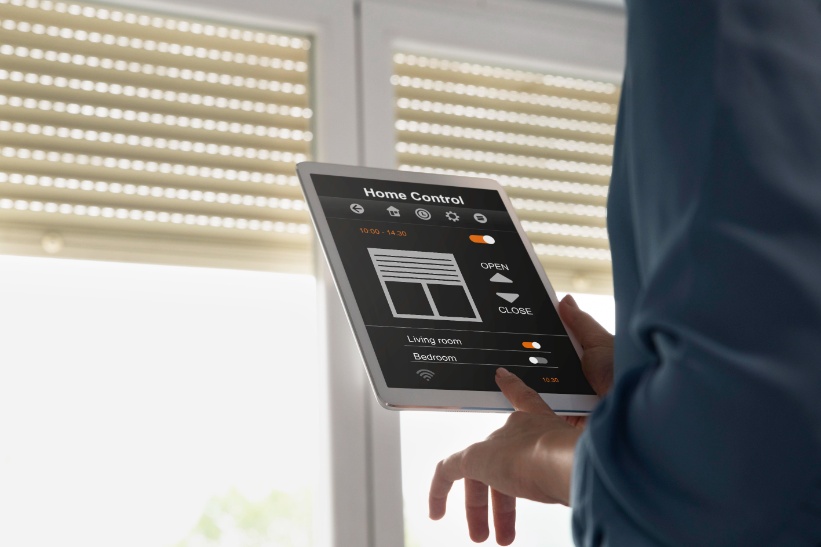Introduction
Definition of smart home automation
Welcome to the world of smart home automation! In this comprehensive guide, we will explore the exciting realm of smart technology and how it can benefit small business owners and entrepreneurs. But first, let’s define what smart home automation is.
Smart home automation refers to the integration of technology and devices to create an intelligent, interconnected system that can control various aspects of your home. These devices are designed to enhance convenience, security, energy efficiency, and overall comfort in your living space. From voice assistants to smart lighting, thermostats, security systems, entertainment devices, and appliances, the possibilities for automating your home are vast and exciting.

Importance and benefits of smart home automation for small business owners and entrepreneurs
For small business owners and entrepreneurs, the value of time and efficiency cannot be overstated. The realm of smart home automation has the potential to revolutionize the management of both your living and workspace, presenting a multitude of advantages:
- Convenience and Time Efficiency: Smart home automation simplifies routine tasks, like adjusting lighting, temperature, or security settings. You can accomplish these actions with a voice command or automated schedules. This newfound efficiency provides you with more time to invest in growing your business.
- Heightened Productivity: A thoughtfully automated smart home environment contributes to a setting conducive to productivity. For instance, integrating smart lighting systems that emulate natural daylight can optimize your focus and energy levels.
- Enhanced Security: Smart security and surveillance systems grant you remote control over monitoring and safeguarding your home and office. Real-time alerts, live camera feeds, and access control capabilities offer peace of mind, safeguarding your business assets.
- Energy Efficiency: The capabilities of smart home automation extend to energy optimization. By automatically adjusting lighting, heating, and cooling based on occupancy and environmental conditions, you can reduce your carbon footprint and cut down on utility expenses.
- Tailored Customization: Smart home automation systems boast a high level of customization. You have the ability to tailor your home environment precisely to your preferences, generating unique experiences for both yourself and your clients.
Now that we’ve comprehended the significance and advantages of smart home automation, let’s delve deeper into the realm of smart technology.
Understanding Smart Home Automation
What is smart home automation?
Smart home automation refers to the amalgamation of technology and devices, empowering you to oversee and regulate diverse facets of your home via a centralized system. These devices establish communication among themselves, affording you the capacity to govern them remotely or via voice commands.
At the core of a smart home automation system lies a central hub or controller, serving as the pivotal command center for all interconnected devices. This hub facilitates communication with individual devices, transmitting your directives and guaranteeing a smooth amalgamation among them.
How does smart home automation work?
Smart home automation works through a combination of hardware, software, and wireless connectivity. Let’s take a closer look at the key components that make up a smart home automation system:
- Central Hub: The central hub serves as the brain of your smart home automation system. It connects to your home’s Wi-Fi network and communicates with all the connected devices. Popular examples of central hubs include Amazon Echo with Alexa and Google Nest Hub with Google Assistant.
- Devices and Sensors: Smart devices and sensors are the building blocks of a smart home automation system. These include smart lighting, thermostats, security cameras, door locks, entertainment systems, and more. Each device connects to the central hub, allowing you to control and monitor them remotely.
- Connectivity: Wireless protocols such as Wi-Fi, Bluetooth, Zigbee, and Z-Wave enable seamless communication between the central hub and connected devices. These protocols ensure that devices can exchange information and receive commands from the hub or other authorized sources.
- Mobile Apps and Voice Assistants: Mobile apps provide a user-friendly interface for controlling and managing your smart home automation system. Additionally, voice assistants like Amazon Alexa and Google Assistant enable you to control devices using voice commands, adding a layer of convenience and hands-free operation.
Now that we have a basic understanding of how smart home automation works, let’s explore how you can get started on your own smart home automation project.
Getting Started with Smart Home Automation
Assessing your needs and goals
Before diving into smart home automation, it’s important to assess your needs and goals. Take some time to consider the following questions:
- What aspects of your home or business do you want to automate? Determine the areas where automation can bring the most value, such as lighting, security, energy management, or entertainment systems.
- What problems do you want to solve? Identify pain points or challenges you face in your daily routine that can be addressed through automation. For example, if you often forget to turn off lights or adjust the thermostat, smart home automation can offer solutions.
- What level of control and customization do you desire? Consider the level of automation you prefer. Some individuals may want full control and customization, while others may prefer more hands-off automation.
By assessing your needs and goals, you can create a clear vision for your smart home automation project and make informed decisions along the way.
Planning your smart home automation project
Once you have a clear understanding of your needs and goals, it’s time to plan your smart home automation project. Here are some essential steps to consider:
- Research and explore available technologies: Familiarize yourself with the different types of smart home automation technologies available in the market. Research the features, compatibility, and user reviews of various devices and systems.
- Create a budget: Smart home automation can range from simple, budget-friendly solutions to more complex and expensive setups. Define a budget that aligns with your needs and prioritize investments based on your goals.
- Map out your automation ecosystem: Create a blueprint of your home or office space, indicating the areas where you plan to implement automation. Consider the number of devices, their locations, and how they will interact with each other.
- Consider scalability: If you envision expanding your automation system in the future, choose devices and systems that offer scalability and compatibility with additional components.
By planning your smart home automation project thoroughly, you can save time, money, and potential frustrations down the line.
Budgeting for smart home automation
Smart home automation can be as affordable or as extravagant as you desire. It’s crucial to set a realistic budget that aligns with your needs and goals. Here are some tips to consider when budgeting for your smart home automation project:
- Prioritize essential automation: Identify the areas where automation would bring the most value to your lifestyle or business operations. Start with the most critical aspects, such as security or energy management, and expand your system over time.
- Research cost-effective solutions: Look for budget-friendly options without compromising on quality. Read reviews, compare prices, and consider open-source platforms that offer flexibility and cost savings.
- Consider long-term savings: While upfront costs may seem significant, remember that smart home automation can lead to long-term savings. Energy-efficient devices can reduce utility bills, and automation can optimize resource usage, ultimately saving you money in the long run.
- Explore DIY options: If you have the technical know-how, consider taking the DIY route for certain aspects of your smart home automation. DIY projects can help you save money on installation and configuration.
Remember to allocate funds not just for the devices themselves but also for installation, additional accessories, and ongoing maintenance.
Now that we have covered the basics of getting started with smart home automation, let’s explore some popular smart home automation technologies in more detail.
Popular Smart Home Automation Technologies
1. Voice Assistants
Introduction to voice assistants
Voice assistants have revolutionized the way we interact with technology. These intelligent virtual assistants, such as Amazon Alexa and Google Assistant, enable you to control your smart home automation system through voice commands. They can perform a wide range of tasks, from turning on lights and adjusting the thermostat to playing music and providing weather updates.
Integrating voice assistants into your smart home automation system

To integrate a voice assistant into your smart home automation system, follow these steps:
- Choose a compatible voice assistant: Determine whether you prefer Amazon Alexa, Google Assistant, or another voice assistant platform. Research the supported devices and compatibility requirements to ensure seamless integration.
- Set up the voice assistant: Follow the manufacturer’s instructions to set up your voice assistant device. This typically involves connecting it to your Wi-Fi network and linking it to your user account.
- Connect smart devices to the voice assistant: Using the companion mobile app for your voice assistant, connect your smart devices to the assistant. This process may vary depending on the brand and model of your devices.
- Create routines and commands: Take advantage of the voice assistant’s capabilities by creating custom routines and commands. For example, you can set up a routine called “Good Morning” that turns on the lights, adjusts the thermostat, and reads the news when you say, “Alexa, good morning.”
With a voice assistant integrated into your smart home automation system, controlling your devices becomes as simple as issuing voice commands.
Controlling devices with voice commands
Once you have successfully integrated a voice assistant into your smart home automation system, you can control your devices using voice commands. Here are some examples:
- “Hey Google, turn on the living room lights.”
- “Alexa, set the thermostat to 72 degrees.”
- “Hey Siri, lock the front door.”
- “Alexa, play some jazz music.”
By leveraging the power of voice commands, you can effortlessly control and manage your smart devices, adding a touch of convenience and even entertainment to your daily routine.
2. Smart Lighting
Benefits of smart lighting in a smart home
Smart lighting offers numerous benefits for small business owners and entrepreneurs. Here are some advantages of incorporating smart lighting into your smart home automation system:
- Energy efficiency: Smart lighting systems use LED technology and advanced controls to optimize energy usage. They can automatically adjust brightness levels, turn off lights when no one is present, and even respond to natural light conditions, reducing energy waste and lowering electricity bills.
- Enhanced ambiance and productivity: With smart lighting, you can create custom lighting scenes to match different moods or activities. For example, you can set up a “Work Mode” scene that brightens your office space with cool white light to promote focus and productivity.
- Convenience and automation: Smart lighting systems allow you to schedule and automate lighting based on your preferences and routines. You can set lights to turn on or off at specific times, simulate occupancy when you’re away, or even sync lights with sunrise and sunset for a natural lighting experience.
- Integration with other devices: Smart lighting can be integrated with other devices and sensors, such as motion detectors or door sensors. This enables advanced automation scenarios, such as turning on lights when motion is detected or activating specific lighting scenes when a door is opened.

Choosing smart lighting solutions
When choosing smart lighting solutions for your smart home automation system, consider the following factors:
- Compatibility: Ensure that the smart lighting system you choose is compatible with your central hub or voice assistant. This ensures seamless integration and control.
- Wireless connectivity: Look for lighting systems that use wireless protocols such as Zigbee or Z-Wave, as they provide reliable and robust communication with the central hub.
- Features and capabilities: Consider the features and capabilities of the smart lighting system. Look for options like dimmable lights, color-changing capabilities, and the ability to create custom lighting scenes.
- Installation and setup: Evaluate the ease of installation and setup. Some smart lighting systems require professional installation, while others can be easily set up by the user.
Popular smart lighting solutions include Philips Hue, LIFX, and Wyze Bulbs. These systems offer a wide range of options to suit different preferences and budgets.
3. Smart Thermostats
Benefits of smart thermostats in a smart home
Smart thermostats bring significant benefits to small business owners and entrepreneurs, particularly in terms of energy management and comfort. Here are some advantages of incorporating smart thermostats into your smart home automation system:
- Energy savings: Smart thermostats enable intelligent temperature control, adjusting heating and cooling based on occupancy and environmental conditions. They can learn your schedule, sense when you’re away, and make automatic adjustments to save energy and reduce utility costs.
- Remote control and monitoring: With smart thermostats, you can control and monitor the temperature of your home or office remotely. This allows you to adjust settings, set schedules, and ensure optimal comfort even when you’re away.
- Integration with other devices: Smart thermostats can integrate with other devices in your smart home automation system, such as occupancy sensors or window sensors. This enables advanced automation scenarios, such as turning off the HVAC system when a window is open or adjusting the temperature based on room occupancy.
- Energy usage insights: Smart thermostats provide valuable insights into your energy usage patterns. They can generate reports, offer energy-saving tips, and even provide recommendations for optimizing your HVAC system’s efficiency.

Choosing a smart thermostat
When choosing a smart thermostat for your smart home automation system, consider the following factors:
- Compatibility: Ensure that the smart thermostat is compatible with your HVAC system. Some thermostats only work with specific types of heating and cooling systems, so check compatibility before making a purchase.
- Installation requirements: Evaluate the installation requirements of the smart thermostat. Some models require professional installation, while others can be installed by the user.
- Features and controls: Look for features such as programmable schedules, learning capabilities, geofencing, and remote control via mobile apps. Consider the user interface and controls to ensure ease of use and customization.
- Integration with your smart home ecosystem: Check whether the smart thermostat integrates with your central hub or voice assistant. The integration allows for seamless control and coordination with other devices in your smart home automation system.
Popular smart thermostat options include Nest Thermostat, ecobee SmartThermostat, and Honeywell Home T9. These thermostats offer advanced features, energy savings, and integration capabilities to enhance your smart home experience.
4. Smart Security Systems
Importance of smart security systems
Security is a top priority for any small business owner or entrepreneur. Smart security systems offer enhanced protection and peace of mind by incorporating advanced features and remote monitoring capabilities. Here are some key benefits of incorporating smart security systems into your smart home automation:
- Remote monitoring and alerts: Smart security systems allow you to monitor your home or office remotely. You can receive real-time notifications and alerts on your smartphone when security events occur, such as motion detected or a door opened.
- Video surveillance: Many smart security systems include security cameras that provide live video feeds and recordings. This allows you to keep an eye on your property from anywhere, deterring potential intruders and providing evidence in case of incidents.
- Integration with other devices: Smart security systems can integrate with other devices in your smart home automation system, such as smart locks, door/window sensors, and motion detectors. Integration enables automated responses, such as activating cameras when motion is detected or locking doors when the security system is armed.
- Enhanced access control: With smart security systems, you can manage access to your property more effectively. You can remotely lock and unlock doors, create temporary access codes for visitors or employees, and receive notifications when doors are opened.

Choosing a smart security system
When choosing a smart security system for your smart home automation, consider the following factors:
- Components and features: Evaluate the components and features of the security system. Look for options like security cameras, motion sensors, door/window sensors, sirens, and professional monitoring services.
- Wireless connectivity: Ensure that the security system uses wireless connectivity for easy installation and flexibility. Wireless systems are easier to set up and can be expanded or reconfigured as needed.
- Mobile app and remote access: Check if the security system offers a mobile app for remote access and control. The app should provide an intuitive interface for monitoring and managing your security system.
- Integration capabilities: Consider whether the security system can integrate with other devices in your smart home automation system. Integration allows for more robust automation and coordination between devices.
Popular smart security systems include Ring Alarm, SimpliSafe, and Arlo Pro. These systems offer a range of security components and features to meet different security needs and budgets.
Conclusion
Smart home automation offers numerous benefits for small business owners and entrepreneurs, including convenience, energy efficiency, enhanced security, and cost savings. By assessing your needs and goals, planning your project, and choosing the right technologies, you can create a smart home automation system that meets your requirements and enhances your lifestyle or business operations.
Remember to start with the essential aspects, such as lighting, thermostats, and security, and gradually expand your system over time. Stay informed about the latest smart home technologies and continue exploring new ways to make your home or office smarter and more efficient.
If you’re new to smart home automation, it can be helpful to consult with a professional or seek guidance from online resources and communities dedicated to smart home technology. With the right approach and a little investment, you can transform your space into a connected and intelligent environment that simplifies your daily routines and supports your goals.
